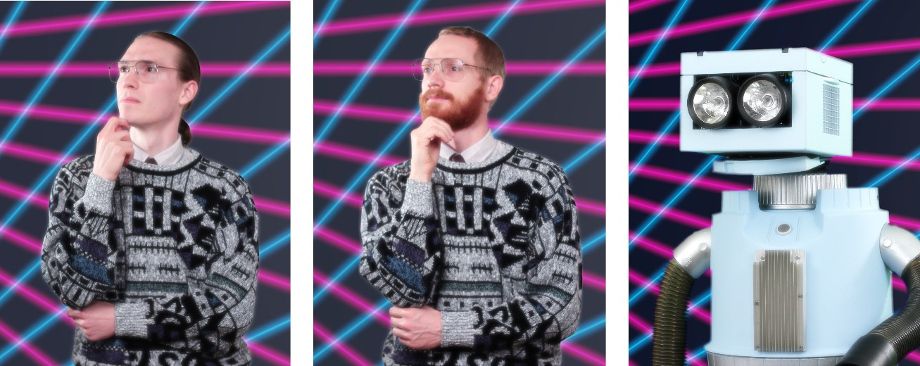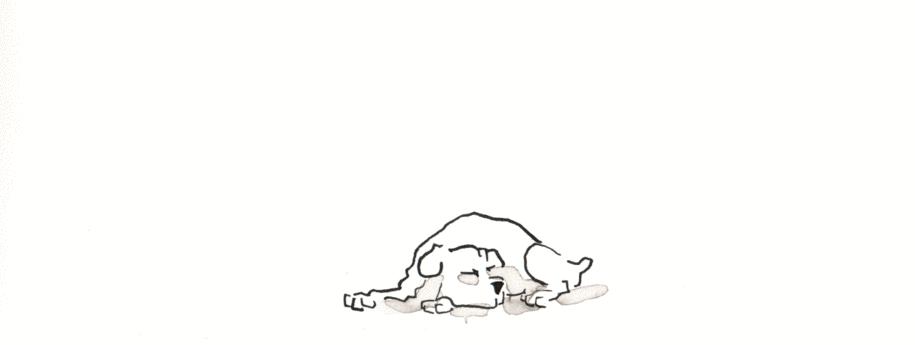With the astonishing growth of Linux and the explosion of quality free and open source software, the barrier to entry for media production has never been lower. Anyone of any age or background with any budget can make professional grade media using free and open source tools. This shifts the media conversation away from corporate interests and puts the power to create in the hands of the people.
Perhaps more important than being free as in (root)beer, FOSS is free as in freedom. Anyone may use, copy, study, and modify it in any way. It differs from “freeware” in that the source code is openly shared with the community, often with encouragement for users to contribute to and improve upon the design. Generally speaking, this means you end up with a much more secure software suite, even if it is a little rough around the edges. Furthermore, FOSS eliminates the licensing headaches associated with proprietary applications. You are free to use FOSS whenever, wherever, and with whatever hardware you want. No permission necessary.
Hardware Requirements
While we will discuss entirely free software-based methods for making media, the truth is that media production will always have some cost associated with it. Below is a list of the essential hardware to consider if you intend on doing any video production or stop-motion animation.
- Camera: Consider picking up a DSLR (digital single-lens reflex) camera. These offer greater flexibility over video cameras, as they can be used for video, stop-motion animation, and still photography. Interchangeable lenses also provide greater quality and control than most video cameras. Older models are often heavily discounted, and most Canon cameras can be given a bit of a performance boost with Magic Lantern (www.magiclantern.fm), a free software add-on that runs from the SD/CF card and adds a host of new features that weren’t included from the factory.
- Tripod: Invest in the best tripod you can afford without breaking the bank. Tripods are critically important for video and an absolute necessity for stop-motion animation.
- Lights: If you have the budget for a professional light kit, by all means go for it. Lighting is possibly the most important tool in your video production kit. If you don’t have the budget for it, pick up a set of shop lights or a handful of clip lights and the brightest daylight-balanced fluorescent or LED light bulbs you can find.
- Scanner: There’s a good chance you already have a decent flatbed scanner built into your printer, so don’t worry about seeking out something better. Scanners are great for capturing textures and drawings for use in digital animations, and can even be repurposed for stop-motion animation.
- Computer: Building a PC from parts is easier than it sounds and is often cheaper than buying a pre-built system. Plus you’ll end up with higher-quality components and specs that are perfectly attuned to your needs. If you are ready to try Linux, you’ll even save a bit by skipping the Windows license.
FOSS Toolkit
Most everything we will cover is available on Windows and/or Mac OS, but more importantly, everything mentioned runs on Linux. Linux is a completely free and open-source computer operating system. The massive, talented development communities behind the Linux kernel and its staggering variety of distributions (often called distros) collaborate to provide a highly secure, stable alternative to Windows and Mac OS that respects your privacy. Linux Mint (www.linuxmint.com) is the most popular distribution according to DistroWatch, and is an excellent starting point for beginners. Ubuntu, another long-standing community favorite, may resonate with former Mac OS users, and KDE is making strides to provide a unique, modern desktop computing experience. The beauty of Linux is the abundance of choices and freedom to modify and adapt what doesn’t fit with your workflow.

Graphic Design
Inkscape (www.inkscape.org) provides a user-friendly vector graphics editor for a variety of design situations from print media to websites and animations. It is similar to Adobe Illustrator, only free and open source.
Photo Editing
GIMP (www.gimp.org) is easily the most popular FOSS image manipulation program. It is every bit as powerful as Photoshop, but generally requires a few extra steps to achieve the same results Photoshop users can with the click of a button. It can be used as a digital painting canvas, but the excellent Krita (www.krita.org) is better suited for that.
If you are a RAW photographer, you’ll be happy to know there are several great FOSS tools for editing RAW images. Darktable (www.darktable.org) can be a bit confusing at first, but is loaded with features and even supports remote shooting. It is available for Linux and Mac. Windows users may try Rawtherapee as an alternative (www.rawtherapee.com).

Stop Motion Animation
Stop motion animation, sometimes called clay animation, is the process of animating physical objects by changing their pose between each frame. It’s a decidedly niche art form, so it should come as no surprise that there aren’t any professional-grade stop motion animation suites that are free and open source. It is possible to hack together your own stop motion studio with a handful of free and open source tools. Because the illusion of motion is created by playing a series of still photos in rapid succession, all we need is a method for capturing images from a camera connected to a computer and a way to compile those images into a video. Usually DSLR cameras ship with remote-shooting software for Windows and Mac, but Linux users get to use the excellent FOSS application Entangle (www.entangle–photo.org). Using GIMP to determine how to crop the resultant images, the video can then be compiled with avconv.
- Create stop motion animations with Entangle and avconv
- How to compile a stop motion animation sequence
Traditional 2D Animation
Much like stop-motion animation, traditional 2D animation creates the illusion of motion by staging each frame of a scene. While the final product is usually a conglomeration of transparent layers called cels, most animations begin as a rough pencil test, in which each frame of the animation is roughly sketched by hand. With nothing more than a scanner and a stack of printer paper, you can very easily create pencil test animations and compile them with avconv.

Traditional 2D animation featured in The Quick Brown Fox Rocks Audio and Video with HTML.
Digital 2D Animation
Digital 2D animation software eliminates the need to create animations frame-by-frame with the use of keyframes to automatically modify elements over time. This style of animation was popularized by Adobe Flash, and indeed many animators still use Flash and After Effects today. Synfig (www.synfig.org) is a cross-platform, FOSS animation studio not unlike Flash and After Effects. Its primary function is aiding creation of cutout style animations (a la Terry Gilliam), but it can also be useful for some post-production compositing effects.
3D Animation
Blender (www.blender.org) is a remarkably powerful, free and open-source 3D modeling and animation program. It can also be used as a video editor and compositor, and even comes equipped with its own game engine. It rivals proprietary 3D animation applications in terms of capabilities, but has a notoriously steep learning curve.
Media Conversion and Image Sequence Compiling
For all your video and audio conversion needs, look no further than avconv (www.libav.org). This powerful command-line utility runs on Windows, Mac, and Linux, and can be used to quickly batch convert videos and image sequences to a wide variety of codecs. There are GUI front-ends for avconv, but the command line syntax is not hard to learn, and you will come to appreciate the amount of control it offers.
- How to Trim Videos with the Command Line Using AVConv
- How To Extract Images from a Video with avconv on Linux
avconv -i input.mov -c:v libx264 -crf 18 -c:a libvorbis -q:a 10 output.mkvBatch Image Processing & Gif Creation
Imagemagick (www.imagemagick.org) is for still images what the aforementioned avconv is for video. This cross-platform command-line interface can convert images to numerous formats, perform batch operations, and even output animated gifs. The command-line syntax is intuitive, but the amount of options can be overwhelming at first.
- How To Create Animated GIFs from a PNG Sequence with ImageMagick and the Command Line
- ImageMagick Tutorial: How To Batch Resize Images on the Command Line
convert -delay 2 -loop 0 *.png -scale 650 out.gifAudio Editing
For most simple audio recording and editing projects, Audacity (www.audacityteam.org) will more than suffice. For more complex projects, Ardour (www.ardour.org) is a feature-rich digital audio workstation that can even be used as a midi sequencer.
Digital music production can become incredibly complicated with Ardour, so check out LMMS (www.lmms.io) for a more streamlined midi sequencer. LMMS is often considered the free and open source alternative to FL Studio, and indeed borrows many user interface elements.
Video Editing
Lightworks (www.lwks.com), the academy and emmy award-winning video editor, is professional-grade freemium software available for Windows, Mac, and Linux. The free version is nearly the same as the pro version, but with severe limitations on the exporter. Lightworks is supposedly on track to become free and also open source, but EditShare has yet to live up to that promise. Windows and Mac users may want to try Davinci Resolve (www.blackmagicdesign.com) as an alternative. There are a number of free and open source video editors on Linux, but none of them offer the necessary features to make them viable competition. Kdenlive, Flowblade, and Pitivi are promising up-and-comers to keep an eye on.
- Lightworks Video Editing: Import, Playback, and Cue Points
- Lightworks Video Editing: Basic Timeline Edits
- Lightworks Video Editing: Advanced Trimming Techniques
Get Animated!
There’s never been a better time to jump into creative media production with Linux and free software. With nothing more than a computer, you can bring your ideas to life as animations, videos, music, or illustrations. So what are you waiting for?